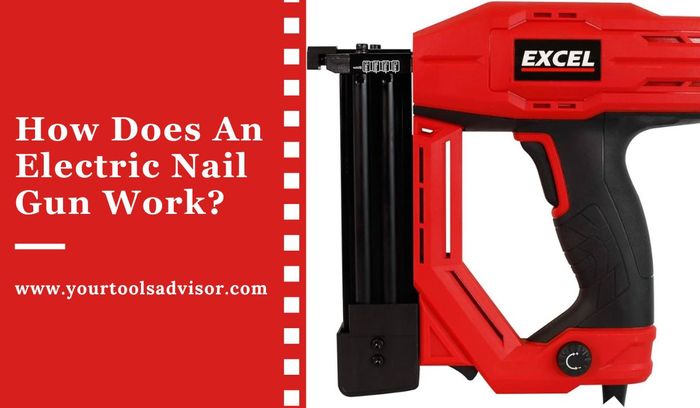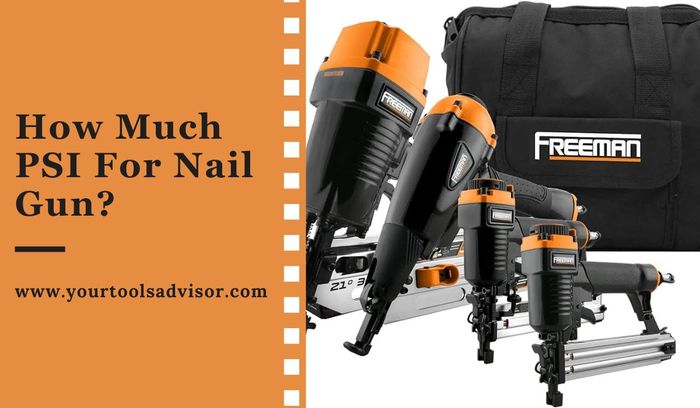Brad Nails and Finishing Nails are not the same. Brad nails are thinner and have smaller heads, while finishing nails are thicker and have larger heads.
Brad nails are commonly used for delicate and thin materials, while finishing nails are suitable for heavier and more robust applications. When it comes to choosing the right nails for your project, understanding the differences between Brad Nails and Finishing Nails is crucial.
While both types are commonly used in carpentry and woodworking, they have distinct characteristics that make them suitable for specific applications. Brad nails are thinner and have smaller heads, making them ideal for delicate materials such as trim work, molding, and thin boards. On the other hand, finishing nails are thicker and have larger heads, providing more holding power and stability, making them suitable for heavier applications like furniture construction and framing. By knowing the differences, you can ensure that you select the appropriate nail for your project, resulting in a more durable and aesthetically pleasing outcome.
What Are Brad Nails?
Brad nails are small, thin nails that are commonly used in carpentry and woodworking projects. They are similar to finishing nails in terms of their purpose, which is to attach narrow moldings and trims without causing splitting or visible damage to the material.
Definition Of Brad Nails
Brad nails are typically made of thinner gauge wire and have a smaller diameter compared to other types of nails. They are often 18- gauge or 23-gauge nails, providing less visibility and a more discreet appearance once driven in.
Common Uses Of Brad Nails
Brad nails are commonly used in applications where holding power is not a major requirement, but a neat and delicate finish is desired. They are frequently used for attaching delicate crown moldings, decorative trims, wooden crafts, and furniture assembly.
Features And Characteristics Of Brad Nails
Brad nails are characterized by their slim profile and small heads, which allow them to be easily concealed once driven below the surface of the material. They have a sharp point for easy insertion and often come with a small adhesive strip to improve holding power.
What Are Finishing Nails?
Finishing nails are commonly used in carpentry and woodworking projects. They are slender, tapered nails with small heads. These nails are designed to be driven below the surface of the wood and then concealed using wood filler or putty, leaving a smooth and seamless finish.
Finishing nails are thin and delicate nails that are typically used for attaching trim and molding to wood surfaces. These nails are made from robust materials like steel or stainless steel, ensuring durability and preventing corrosion or rusting. Due to their small diameter, they are less likely to split the wood and provide a discreet way to fix and secure different pieces of wood together.
The most common application of finishing nails is in finish carpentry work. They are used for installing crown molding, baseboards, chair rails, and other decorative moldings. Finishing nails are also handy when working with delicate or thin pieces of wood, as they minimize the risk of damage or splitting. Additionally, they can be used for assembling wooden furniture or securing paneling and casings.
| Material | Steel or stainless steel |
| Head Type | Small, often countersunk |
| Shank Type | Thin and tapered |
| Length | Varying lengths available, typically between 1 and 3 inches |
| Common Features | Durable, corrosion-resistant, minimizes wood splitting |
Size And Thickness
Brad nails and finishing nails are two different types of nails that are commonly used in woodworking and carpentry projects. While they are both used for fastening materials, there are several key differences between the two.
| Brad Nail | Length | Diameter |
|---|---|---|
| 18-gauge | 5/8″ to 2″ | 0.0475″ |
| 16-gauge | 1″ to 2-1/2″ | 0.0625″ |
| 15-gauge | 1-1/4″ to 2-1/2″ | 0.0720″ |
| Finishing Nail | Length | Diameter |
|---|---|---|
| 15-gauge | 1″ to 2-1/2″ | 0.0720″ |
| 16-gauge | 1″ to 2-1/2″ | 0.0650″ |
| 18-gauge | 5/8″ to 2″ | 0.0475″ |
Impact of Size on Nail Strength and Holding Power
The size of a nail plays a significant role in its strength and holding power. Generally, the larger the nail, the stronger it is and the more weight it can bear. However, it’s important to consider the material being fastened and the project requirements when choosing the appropriate nail size. A thicker nail may be needed for heavy-duty applications. Additionally, the size of the nail also affects its compatibility with specific tools. Brad nails are typically smaller and thinner compared to finishing nails, making them suitable for delicate trim work and preventing the risk of splitting the material. Finishing nails, on the other hand, provide a more robust and secure hold.
Head Design
Brad nails and finishing nails are often used interchangeably, but they are not exactly the same. One key difference lies in their head design.
| Types of Brad Nail Heads | Types of Finishing Nail Heads |
|---|---|
| Small, rounded head | Large, flat head |
| T-shaped head | Fishtail head |
Brad nails mainly come with small, rounded heads or T-shaped heads. The small heads are designed to be barely visible, making them ideal for projects where appearance matters. T-shaped heads are suitable for attaching delicate trim and moldings without causing any splitting.
On the other hand, finishing nails have larger, flat heads that provide better support and holding power. The flat heads can be easily countersunk into the wood, allowing for a smooth finish. Fishtail heads are commonly found on finishing nails, and they prevent the nail from fully embedding into the wood.
Choosing between brad nails and finishing nails depends on the project requirements. Brad nails offer a more discreet appearance, while finishing nails provide superior holding power. By understanding the different head designs, you can make an informed decision for your woodworking projects.
Applications And Suitable Materials
Brad nails and finishing nails, while similar in appearance, are designed for different applications and materials. The following are recommended applications for brad nails:
- Trim work
- Cabinet installation
- Furniture making
- Paneling
On the other hand, finishing nails are typically used for:
- Baseboards
- Crown molding
- Door and window casings
- Woodworking projects
When it comes to materials compatibility, it is crucial to choose the right nail for the job. Brad nails are suitable for softer or thinner materials such as softwoods, plywood, and MDF. Finishing nails, being slightly larger in diameter, are better suited for hardwoods and denser materials. By selecting the appropriate nail for your project and material, you can ensure a secure and long-lasting finish.
Purpose And Function
Brad nails and finishing nails are commonly used in woodworking and carpentry projects. While they have some overlapping functions, they are not exactly the same.
Brad nails are thin and small in size, typically ranging from 18 to 23 gauge. They have a slight head and are often used for delicate trim work, attaching thin moldings, or securing thin wooden pieces together. On the other hand, finishing nails have a larger diameter and a flat head. They are commonly used to attach finishing trims, such as baseboards and crown moldings, to walls.
Despite their differences, both types of nails offer benefits in various applications. Brad nails provide a clean and discreet appearance due to their smaller size, making them ideal for projects that require a more seamless finish. Finishing nails, with their larger size, offer stronger holding power to secure heavier trims and molding materials.
| Benefits of Brad Nails | Benefits of Finishing Nails |
|---|---|
| Seamless finish | Strong holding power |
| Ideal for delicate trim work | Suitable for heavier trims |
| Discreet appearance | Commonly used for baseboards and crown moldings |
Installation And Techniques
Similarities in Installation and Techniques:
When it comes to the installation and techniques involved in using Brad Nails and Finishing Nails, there are several similarities to keep in mind. Both types of nails are commonly used in woodworking projects, offering a secure and long-lasting bond. They are typically driven into the material using a nail gun or a hammer, and both require careful positioning and alignment for optimal results. Moreover, it is important to use the appropriate size of nails based on the thickness of the material to avoid splitting or damage. Additionally, both Brad Nails and Finishing Nails can be countersunk and filled with wood filler for a seamless finish. By following these best practices, you can ensure a successful nail job and achieve professional-looking results.
Availability And Cost
Brad nails and finishing nails are two common types of nails used in woodworking and construction projects. While they may have different names, they are actually quite similar in terms of availability and cost. Both brad nails and finishing nails are widely available at home improvement stores, online retailers, and hardware stores. They can often be purchased in different lengths to suit your specific project needs. In terms of cost, both types of nails are relatively affordable and cost-effective, making them an ideal choice for many DIY enthusiasts and professionals alike. It’s worth noting that the cost may vary depending on the brand and quantity of nails purchased. However, overall, both brad nails and finishing nails offer a cost-effective solution for various woodworking and construction projects. So, whether you need to secure trim, moldings, or other materials, both brad nails and finishing nails can be easily acquired and won’t break the bank.
Choosing The Right Nail For Your Project
When deciding between brad nails and finishing nails for your project, there are several factors to consider.
| Factor | Brad Nails | Finishing Nails |
|---|---|---|
| Size | Smaller and thinner in diameter | Thicker and longer in length |
| Visibility | Often leaves smaller holes, less noticeable | Leaves larger holes, more visible |
| Strength | Less strong, suitable for delicate projects | Stronger and more durable |
| Application | Great for trim work, small woodworking projects | Ideal for heavy-duty construction, securing larger pieces |
Ultimately, the choice between brad nails and finishing nails depends on the specific requirements of your project.
Brad nails are perfect for delicate trim work and small woodworking projects, where strength is not the primary concern. They leave smaller holes that are less visible.
On the other hand, if you require stronger and more durable fastening, finishing nails are the way to go. They are suitable for heavy-duty construction and securing larger pieces.
In conclusion, both brad nails and finishing nails have their own unique purposes and characteristics. Consider the size, visibility, strength, and application to make the right choice for your project.
Frequently Asked Questions For Are Brad Nails The Same As Finishing Nails
Can Brad Nails Be Used For Finishing?
Yes, brad nails can be used for finishing. They are small and leave smaller holes, which are ideal for trim work and delicate projects.
Can You Hammer In Brad Nails?
Yes, you can hammer in brad nails. They are thin and small, and commonly used for trim work and delicate wood projects. Be cautious to avoid damaging the surface and use a lightweight hammer for better control.
Will Brad Nails Hold In Drywall?
Yes, Brad nails can hold in drywall. They are small and narrow, making them suitable for securing lightweight items like small frames or decorations to drywall. However, for heavier items or to ensure a more secure hold, it is recommended to use anchors or screws specifically designed for drywall.
What Kind Of Nails To Use For Baseboards?
For baseboards, it is recommended to use finishing nails between 1 1/2 to 2 inches in length. These nails provide a secure hold and are easy to conceal with putty for a seamless look. Make sure to choose nails that are compatible with your baseboard material for best results.
Conclusion
To sum up, while there are similarities between Brad nails and finishing nails, they are not identical. Brad nails are thinner and have small heads, making them ideal for delicate woodworking projects. On the other hand, finishing nails possess larger heads and are better suited for heavier applications.
Knowing the differences between these two types of nails will help you choose the right one for your specific project, ensuring optimal results. So, always consider the size, strength, and intended use before selecting either Brad nails or finishing nails.




Leave a Reply